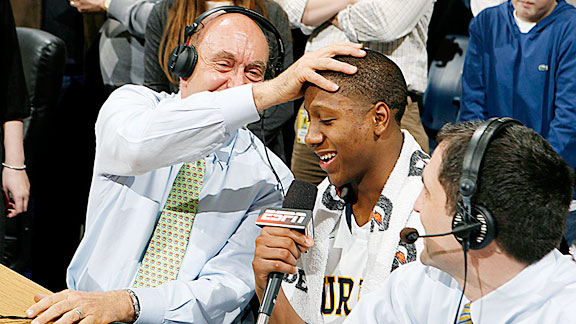Dean Oliver's four-factors are well-understood in how they impact the game.
To figure this out, people usually run a regression of game or team four-factors versus efficiency.
We find the following, roughly:
We find the following, roughly:
| raw coefficients | |
|---|---|
| OeFG% | 1.32 |
| OTO% | -1.19 |
| OOR% | 0.63 |
| OFTM/FGA | 0.17 |
| DeFG% | -1.32 |
| DTO% | 1.19 |
| DOR% | -0.63 |
| DFTR | -0.11 |
However, to say that these are the proper weights for each of these is to assume that each of these is just as controlled by the offense as the defense. Ken Pomeroy has been blogging on the subject and it got me thinking: there is no way that these can be the true (relative) PREDICTIVE values for four-factors.
I ran a LOOCV test for each 2010-11 NCAA team, for each game they played (for both teams).
In layman's terms: I looked at each game, then averaged all the four factors for the other games a team played.
The results look may only slightly different. The difference is, in fact, huge.
| predictive coef | |
|---|---|
| OeFG% | 1.27 |
| OTO% | -1.71 |
| OOR% | 0.73 |
| OFTM/FGA | 0.17 |
| DeFG% | -1.11 |
| DTO% | 0.99 |
| DOR% | -0.62 |
| DFTR | -0.19 |
The differences can be outlined here (x = predictive / raw) :
| x | |
|---|---|
| OeFG% | 96% |
| OTO% | 144% |
| OOR% | 116% |
| OFTM/FGA | 103% |
| DeFG% | 84% |
| DTO% | 83% |
| DOR% | 99% |
| DFTR | 174% |
This is now the basis for my ratings. The strength of schedule part is a bit of a guess, but the results are so different no matter what I do, I can't really tell if it's working :)
All this to say: Murray State is actually more overrated than we thought (#227 in offensive TO%, somehow).




